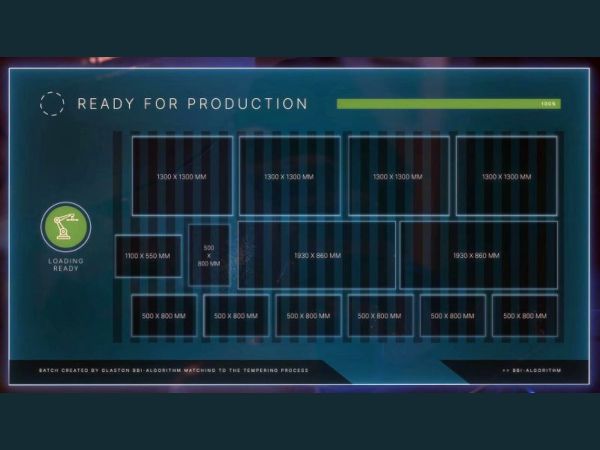Author: Mauri Saksala | Glaston
Source: glastory.net
As we discovered in the ‘Why embrace glass processing automation?’ -blog, modern automated systems have the potential to enhance production, elevate quality standards, save costs and increase safety at virtually every stage of glass processing. From preprocessing to insulating glass manufacturing, tempering, laminating and beyond, today’s automation easily aligns with the diverse needs and production types of processors.
Let’s look at specific application areas where automation streamlines workflows, improves efficiency and optimizes production control.
Automated glass loading and unloading
Regardless of the glass processing type, an automatic glass loader and unloader are the best solutions for optimizing workflow efficiency.
These systems not only increase worker safety and production efficiency, they also decrease energy consumption and improve overall efficiency.
A critical feature of these automated systems is their ability to load glass pieces onto the processing line with utmost efficiency by considering all the batch patterns and specific production requirements.
Automatic glass loaders and unloaders must be integrated seamlessly into a company’s production control system for streamlined production control. Optimizing such a system to meet the unique production requirements, however, should only be done by someone who knows the process thoroughly.
Batch optimization
Automatic batch optimization solutions create the most efficient batch patterns for the type and processing requirements of the glasses in production. This improves efficiency and lowers energy consumption, increasing overall capacity.
These systems are especially beneficial for tempering and laminating lines, where many variables are critical to the process.
For batch optimization solutions to be effective, they must communicate seamlessly with the company’s production control system. User-friendliness is vital. Operators with even limited glass processing experience should be able to manage them easily.
Buffering
A buffering system collects glass pieces with varying production parameters in dedicated areas before processing.
Certain processes need to be buffered to ensure utmost efficiency. One such process is loading a tempering furnace.
Modern automated buffering solutions ensure the most optimized flow of glass pieces through the furnace, managing variations in production parameters and preventing potential bottlenecks. They also increase overall capacity and energy efficiency.
Gradual transition to automation
Glass processing plants have multiple opportunities to improve efficiency. The adoption of processing automation solutions contributes significantly to this transformation.
Still, there’s no need to automate everything at once. When ready, start with a small step, like automating one production line or a specific part of the process, and then gradually take another. For instance, introducing an automatic loader for a flat tempering line could be an easy first step toward full-scale automation.
For more practical insights into processing automation and its potential to transform your operations, download the comprehensive guide below.
Would processing automation benefit you? Take this quick quiz to figure it out!






























